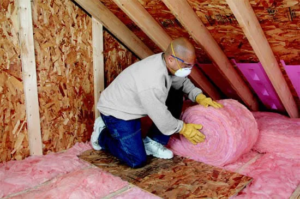Las Vegas Real Estate Agent can make the dream of owning a home come true. They know the area and can recommend contractors, mortgage lenders and attorneys.
They have access to a variety of property listings via the MLS database and can help buyers narrow down their search. They also assist clients in negotiations and contract signings.

A real estate license is an authorization granted by a government body that grants the licensee the legal authority to conduct real estate transactions. Licensing is a requirement for anyone wanting to sell homes and commercial properties in the United States and many other countries.
Licensing requirements vary by state, and it is illegal to engage in real estate activity without one. The process for obtaining a real estate license begins with the completion of pre-licensing courses, followed by passing a state exam.
Once licensed, agents and brokers must complete continuing education courses every two to four years in order to maintain their licenses. These courses focus on current trends and issues in the real estate industry. Those looking to become licensed in New York should have at least a high school diploma or GED certificate. They should also have completed at least 90 hours of pre-licensing courses.
During the pre-licensing course requirement, students will learn about real estate laws and regulations in their particular state, including how to properly handle and present contracts. They will also learn how to properly market and advertise real estate listings. In addition, students will learn how to effectively work with both buyers and sellers.
After completing the pre-licensing course, real estate agents must find a sponsoring broker. The sponsoring broker will act as their mentor while they are learning the business of real estate. The broker will also be able to help them navigate any questions or concerns they may have.
Once a license is obtained, a real estate agent can begin working. They can then offer clients advice on buying and selling property. They can also help their clients fill out paperwork and guide them through the closing process. Moreover, real estate agents can also provide their clients with information on local communities and schools.
While a career in real estate is exciting and lucrative, it requires an upfront investment of money and time. Fortunately, getting your license is relatively easy as long as you follow the right steps. Start by finding the best pre-license real estate education provider, then enroll in a real estate licensing course.
Licensing Requirements
In order to become a real estate agent, you must first get licensed in your state. The exact steps vary from state to state, but they usually include an upfront investment of time and money and the requirement that you complete a certain number of courses and pass a test. Once you have your license, you will need to find a sponsoring broker who can hire you. Some states also require that you purchase Errors and Omissions (E&O) insurance, which is designed to protect you from legal liability should someone file a lawsuit against you as a result of your work in the real estate industry.
Once you have passed your state’s real estate exam, you will need to submit your test scores and license application along with any required fees. Depending on the state, these fees can range from $50 to $250. Some states will also run a background check and fingerprint you before they issue your license.
If you want to be a real estate broker, your state will probably require you to take 75 hours of approved pre-licensing education before you can apply to become licensed. These classes are typically offered by colleges, universities and private real estate schools. They may cover subjects such as property management, real estate law, marketing and finance. Some of these classes are available online, making them more convenient for students.
After completing your pre-licensing course, you will need to apply for your license with your state’s real estate commission. Some states will allow you to do this online, while others will require a paper application and fee. Most states will ask that you provide a sponsorship with a real estate broker.
In New York, for example, you will need to find a sponsoring brokerage that agrees to hire you as an associate broker. During the licensing process, your sponsoring broker will be responsible for training and mentoring you. They will help you build your clientele and develop your skills until you are ready to become a full-fledged broker.
Once you have your license, you will need access to the Multiple Listing Service (MLS) in order to list and sell properties. The cost for MLS access varies, but is typically between $20-$40 per month. In addition, many brokers will offer you a one-percent commission rate for selling properties they have listed. This is often a good incentive to choose the firm with which you wish to work.
Education Requirements
Real estate agents must possess a blend of interpersonal skills and market knowledge to be successful. They must also stay up-to-date on laws and regulations, and learn how to negotiate deals that are beneficial for their clients. For those who enjoy a career that’s gratifying, challenging, and unpredictable, working in real estate is the perfect choice.
Most states require real estate licensees to complete a prelicensing course and pass the state licensing exam before they can start selling properties. These courses typically cover the national and state-specific laws that govern real estate sales. They may be available online, in-person at a real estate school, or at a community college. The cost of the course and the exam can vary by state.
The work environment of a real estate agent is characterized by mobility and autonomy, with a balance of client interaction and administrative tasks. Agents often travel to meet with clients, tour properties, and attend real estate events, and they spend time in their offices or brokerage firms collaborating with colleagues and managing administrative duties.
Once licensed, a real estate agent can choose from a wide variety of specializations. Some agents become military relocation specialists and help service members and their families move to new locations, while others focus on new construction and assist buyers with purchasing homes or commercial property in newly built developments.
Continuing education is a requirement for all real estate professionals to maintain their license and stay abreast of changes in the industry. Most states require real estate agents to take at least 15 hours of continuing education each year. These courses must include at least 2.5 hours of instruction pertaining to ethical business practices and one hour on recent legal matters governing the practice of real estate brokers and salespersons in their jurisdiction.
The work environment of a real estate agent involves a lot of client interactions, so it’s important for entry-level agents to prioritize their schedule and manage their time wisely. Choosing a mentor who can provide guidance on setting boundaries and avoiding overcommitment is an excellent way to begin a successful career in this field. In addition, entry-level agents should consider leveraging technology to streamline client management and establish a consistent workflow. Having access to the Multiple Listing Service (MLS) is another key tool that many agents use to sell their properties. This service can be purchased for $20-$40 per month and is a great way to build your real estate network.
Work Environment
Real estate agents are linchpins in the property transaction process, navigating buyers and sellers through market conditions to ensure a smooth exchange of ownership. Their role includes assessing clients’ needs, marketing properties effectively, and facilitating contracts to meet legal and ethical standards. This highly client-driven career often requires non-traditional work hours. Developing a support network within the industry can help real estate agents manage their workload and find balance. In addition, leveraging technological tools to streamline tasks and automate routines can reduce stress levels.
Achieving a work-life balance as a real estate agent is challenging because of the flexible schedule and varied responsibilities of the position. Meetings with clients and preparing for property showings are frequent, while completing administrative tasks can take up significant amounts of time. Additionally, many real estate agents affiliate with a broker but operate as independent contractors, allowing them to set their own schedules and choose where they want to work.
Despite the flexibility of the job, many real estate agents experience a high level of burnout. This can be due to the commission-based income structure of the profession, which can lead to financial stress and a compulsion to work longer hours. The demanding and competitive nature of the business also contributes to a sense of urgency that can be difficult to manage.
Finding a work-life balance as a Realtor involves setting firm boundaries for their availability and prioritizing personal health, relationships, and rest. Maintaining a positive attitude and establishing regular self-assessments can help maintain balance in this rewarding yet challenging career.
A successful career in real estate is dependent on networking and marketing, as well as maintaining a strong presence on social media platforms. To stay competitive, agents must regularly update their knowledge of the local market and trends. They also must be able to quickly adapt to changing market conditions and new regulations. Ultimately, a successful real estate agent will be able to provide their clients with the highest standard of service and expertise. They will achieve this by building a brand for themselves in the real estate community and promoting their services through multiple channels, including websites, billboards, television and radio spots, fliers, and open houses.





